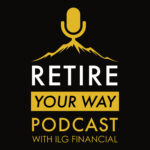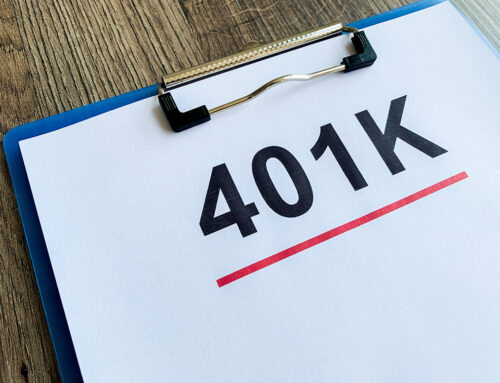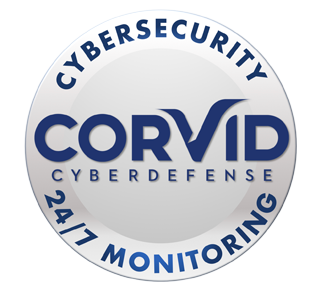 The SECURE 2.0 Act has sparked retirement confusion and concerns
The SECURE 2.0 Act has sparked retirement confusion and concerns
Retirement planning has become a puzzle of intricate legislation, and the recent changes brought about by the SECURE 2.0 Act have only added more complexity. While some alterations aim to enhance the retirement landscape, others have sparked confusion and concern, especially regarding catch-up contributions for higher-income earners in 401(k) plans.
Set to take effect in 2024, the new rules have left many scratching their heads, particularly those looking for clarity on their financial future.
SECURE 2.0 and Catch-Up Contributions
The SECURE 2.0 Act brought significant modifications to retirement account rules, with some changes already in effect. However, the adjustments to catch-up contributions for 401(k) plans have been met with uncertainty. For older adults seeking to optimize their retirement savings, understanding these changes is crucial, as they play a pivotal role in long-term financial planning.
Roth Basis for Catch-Up Contributions
One of the central concerns arising from SECURE 2.0 revolves around the alteration in the rules governing catch-up contributions for higher-income earners in 401(k) plans. Traditionally, catch-up contributions allowed individuals aged 50 and above to contribute additional funds to their retirement accounts, providing a last-minute opportunity to bolster savings.
However, the catch is that, under the new rules, catch-up contributions for those earning $145,000 or more in the previous year must be made on a Roth basis. Unlike traditional 401(k) contributions, making catch-up contributions on a Roth basis involves utilizing after-tax money. This means paying taxes on these contributions during the years when individuals typically earn more, as opposed to deferring taxes until retirement.
The Tax Dilemma
The dilemma lies in the tax implications of this shift. While traditional 401(k) contributions offer the advantage of deferring taxes until retirement, the SECURE 2.0 changes require higher-income earners to pay taxes on catch-up contributions upfront. This approach could be disadvantageous for those who anticipate being in a lower tax bracket during retirement.
Additionally, catch-up contributions made on a Roth basis do not grant tax deductions, a benefit enjoyed by individuals contributing to traditional 401(k) accounts. Despite this, the silver lining is the potential for tax-free withdrawals in retirement, offering a degree of flexibility in managing tax liabilities during the post-working years.
Income Thresholds and Exclusions
It’s important to note that the SECURE 2.0 Roth catch-up contribution rule applies exclusively to taxpayers earning $145,000 or more in a tax year. Those with an income of $144,999 or less are exempt from this particular provision, providing some relief for those on the cusp of the income threshold.
Seek Advice
As the SECURE 2.0 Act ushers in changes to retirement planning, the adjustments to catch-up contributions for higher-income earners in 401(k) plans have sparked both confusion and concern. The requirement to make catch-up contributions on a Roth basis introduces a new layer of complexity, forcing individuals to navigate the trade-off between immediate tax implications and potential tax-free withdrawals in retirement.
For those affected, seeking advice from financial professionals and staying informed about the evolving landscape of retirement regulations is essential for making well-informed decisions in the ever-changing realm of retirement planning.
Source: Copyright © 2024 FMeX. All rights reserved. Distributed by Financial Media Exchange.























 Megan Jones joined the ILG Financial team in 2020 as marketing director. Megan and her husband live in Fredericksburg, VA with their German Short Haired Pointer, Gus. Megan is a graduate of Longwood University and holds a degree in communications. Megan is the oldest of Dave Lopez’s three children and not only enjoys working alongside her father, but also with her cousin, Chase, who joined the ILG Financial team in 2020 as an advisor. Megan is also a fully licensed Life, Health, and Annuity agent. When not at work, Megan enjoys sitting on the back porch with family and friends enjoying food and music.
Megan Jones joined the ILG Financial team in 2020 as marketing director. Megan and her husband live in Fredericksburg, VA with their German Short Haired Pointer, Gus. Megan is a graduate of Longwood University and holds a degree in communications. Megan is the oldest of Dave Lopez’s three children and not only enjoys working alongside her father, but also with her cousin, Chase, who joined the ILG Financial team in 2020 as an advisor. Megan is also a fully licensed Life, Health, and Annuity agent. When not at work, Megan enjoys sitting on the back porch with family and friends enjoying food and music. Chase Lopez joined the ILG Financial team in 2020 as an advisor. Chase is a 2016 James Madison University graduate with a degree in management. Chase has been trained under the tutelage of Dave Lopez, who is not only the founder and managing member of ILG Financial, but also is Chase’s uncle and godfather. He also enjoys working alongside his cousin, Megan, who is Dave’s daughter.
Chase Lopez joined the ILG Financial team in 2020 as an advisor. Chase is a 2016 James Madison University graduate with a degree in management. Chase has been trained under the tutelage of Dave Lopez, who is not only the founder and managing member of ILG Financial, but also is Chase’s uncle and godfather. He also enjoys working alongside his cousin, Megan, who is Dave’s daughter. Amy Anderson joined the ILG Financial team in 2023 as the client relations coordinator. Her responsibilities include scheduling of appointments, annual check-up notifications, and annuity and required minimum distribution assistance. She is a graduate of Harding University with a degree in Computer Information Systems. Amy and her husband have two children and she enjoys reading, crocheting, music and spending time with her family.
Amy Anderson joined the ILG Financial team in 2023 as the client relations coordinator. Her responsibilities include scheduling of appointments, annual check-up notifications, and annuity and required minimum distribution assistance. She is a graduate of Harding University with a degree in Computer Information Systems. Amy and her husband have two children and she enjoys reading, crocheting, music and spending time with her family. Jessica Carson joined the ILG Financial team in 2018 as an agent. Jessica and her husband have four children, two dogs, 3 barn cats, 5 chickens, and three parakeets. She indeed loves her children and pets! When not at work, Jessica enjoys playing the piano and cello as well as traveling and spending time outside with her family, hiking, fishing, and boating.
Jessica Carson joined the ILG Financial team in 2018 as an agent. Jessica and her husband have four children, two dogs, 3 barn cats, 5 chickens, and three parakeets. She indeed loves her children and pets! When not at work, Jessica enjoys playing the piano and cello as well as traveling and spending time outside with her family, hiking, fishing, and boating. Terri Center joined the ILG Financial team in 2019 as client services manager. She handles client records, application processing, and gathering information to provide a professional and friendly experience with all of our clients. Terri is a graduate of Oakland University. She is married and has two children. She enjoys hiking, family time, and puzzle challenging video games. She also likes to share her creativity in her canvas paintings and sewing projects.
Terri Center joined the ILG Financial team in 2019 as client services manager. She handles client records, application processing, and gathering information to provide a professional and friendly experience with all of our clients. Terri is a graduate of Oakland University. She is married and has two children. She enjoys hiking, family time, and puzzle challenging video games. She also likes to share her creativity in her canvas paintings and sewing projects.